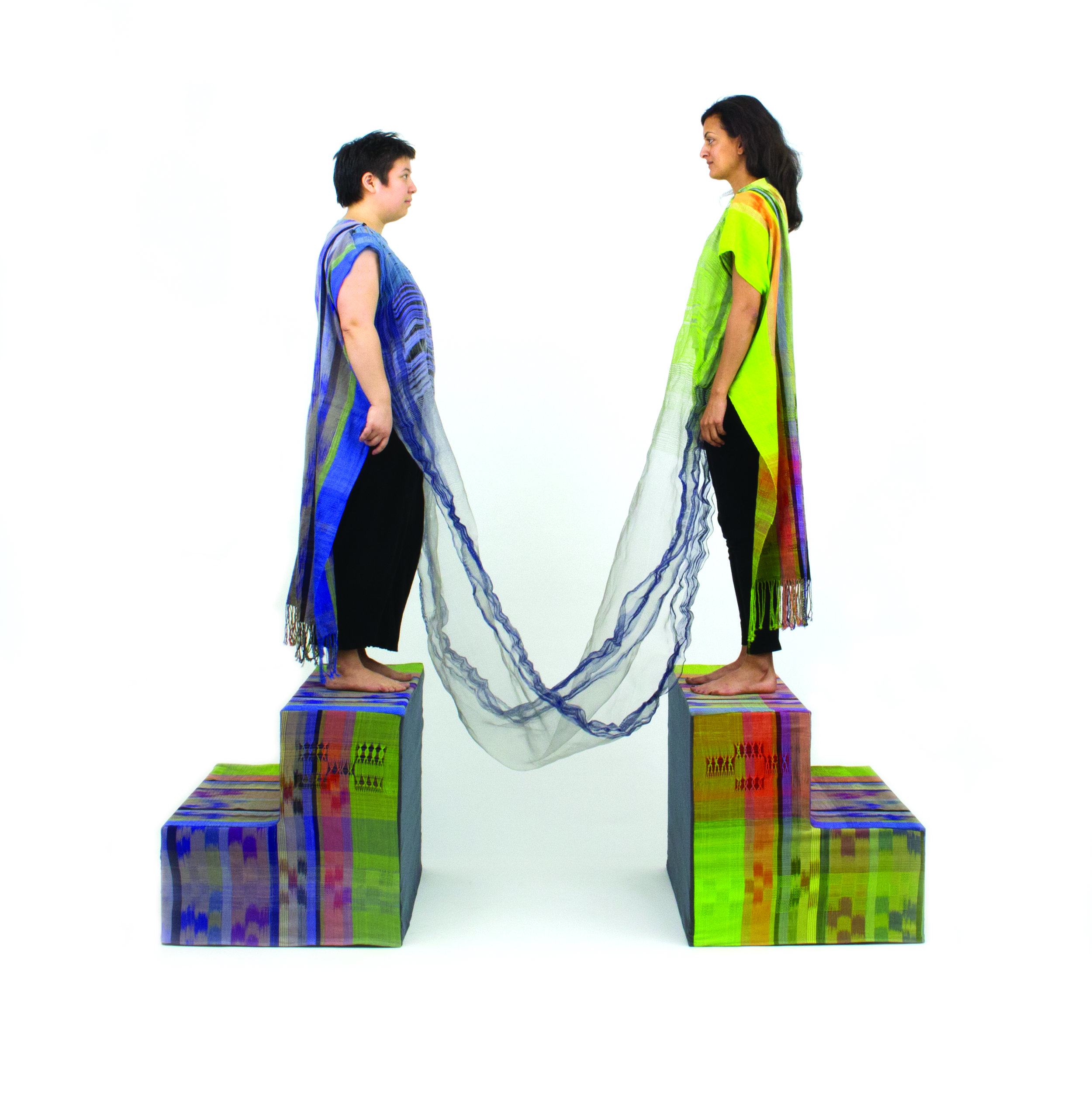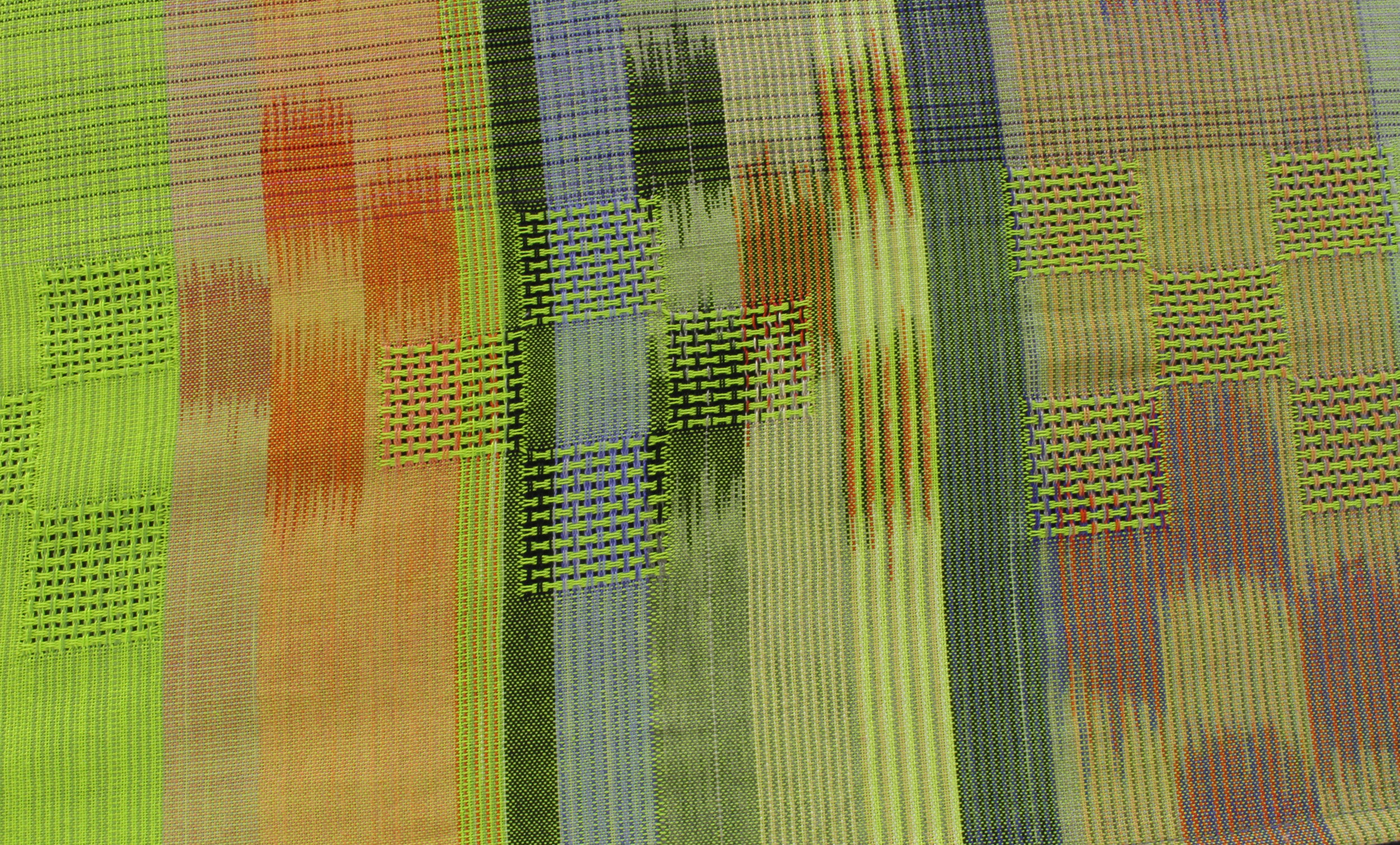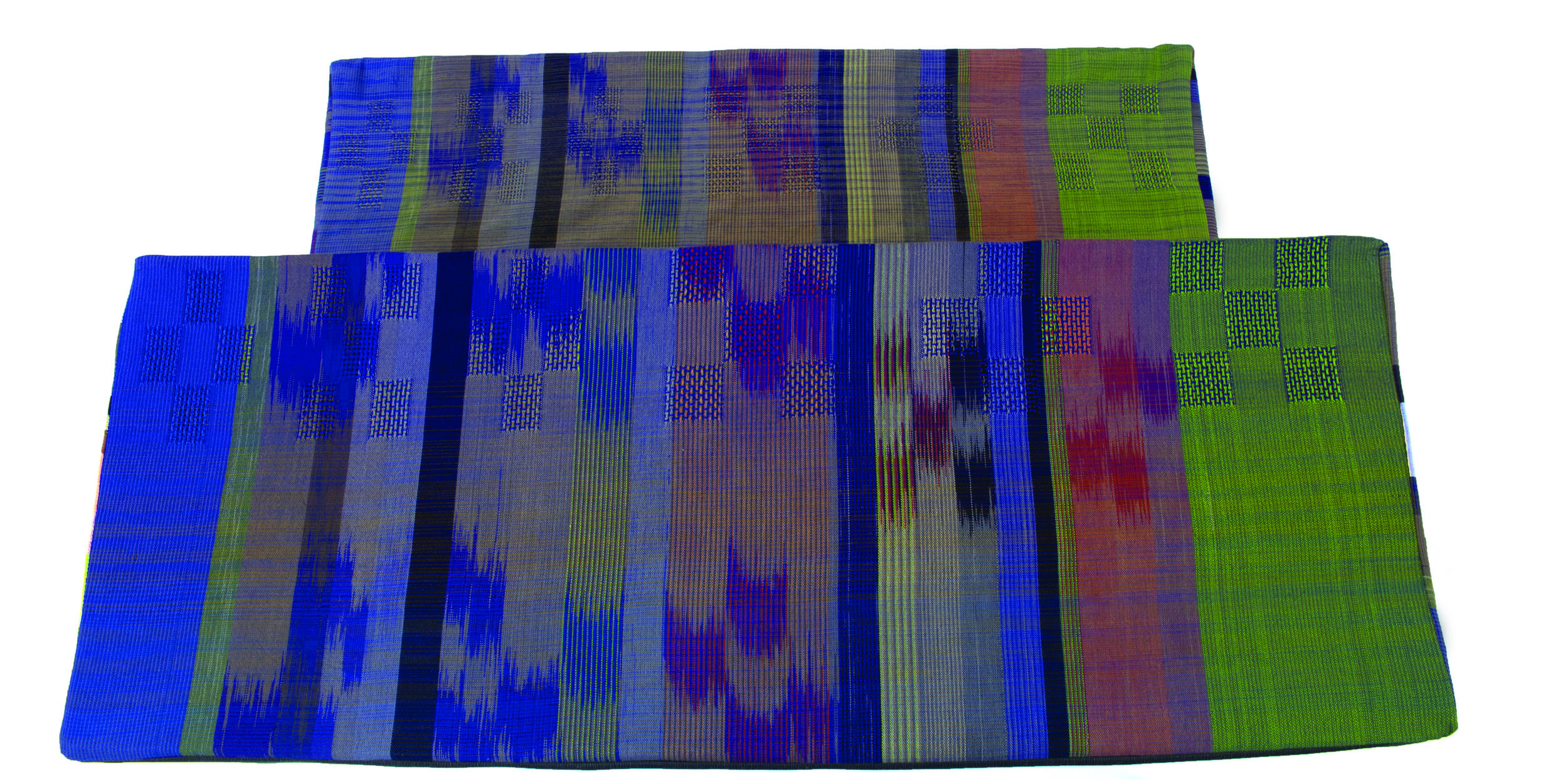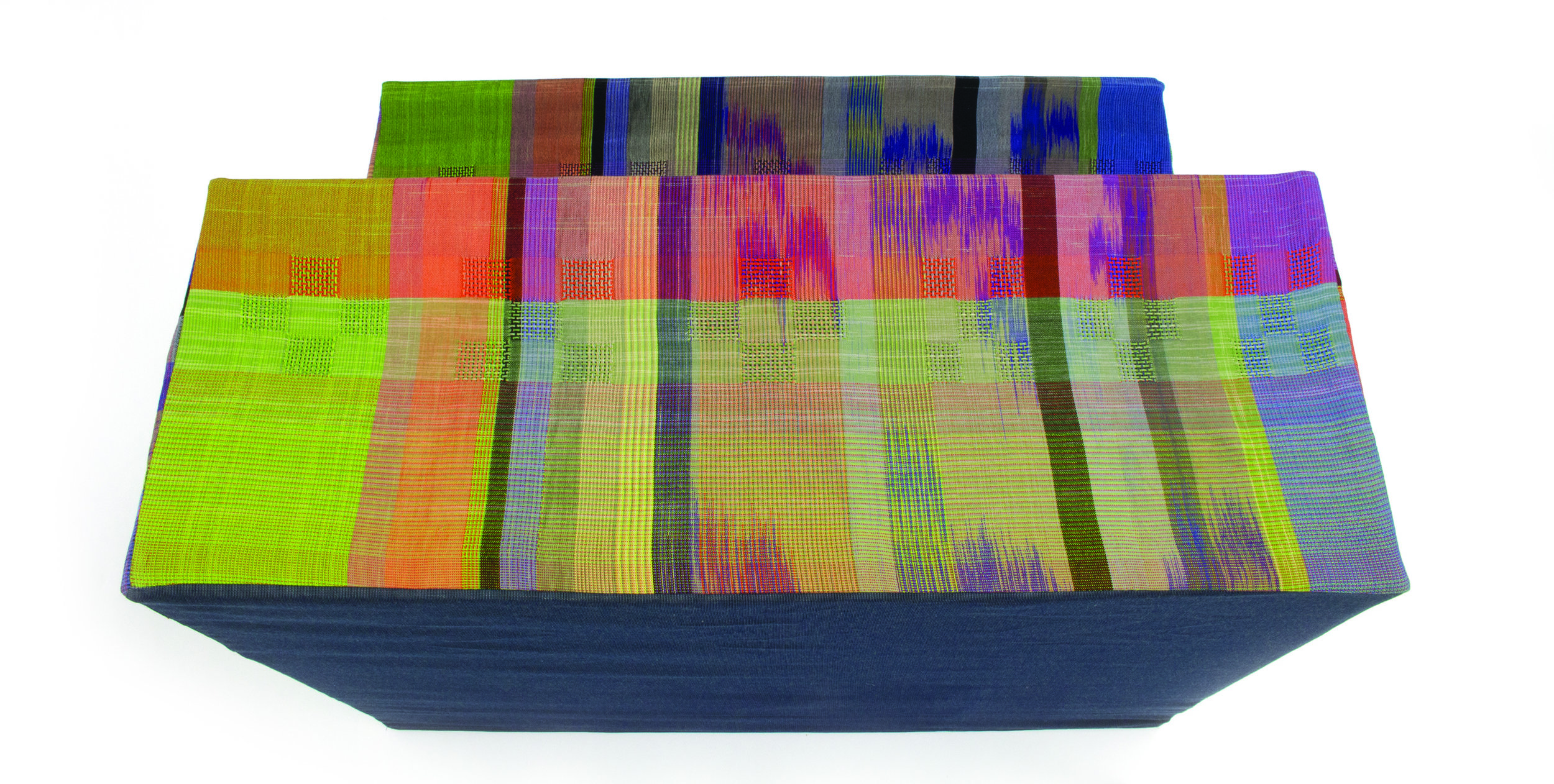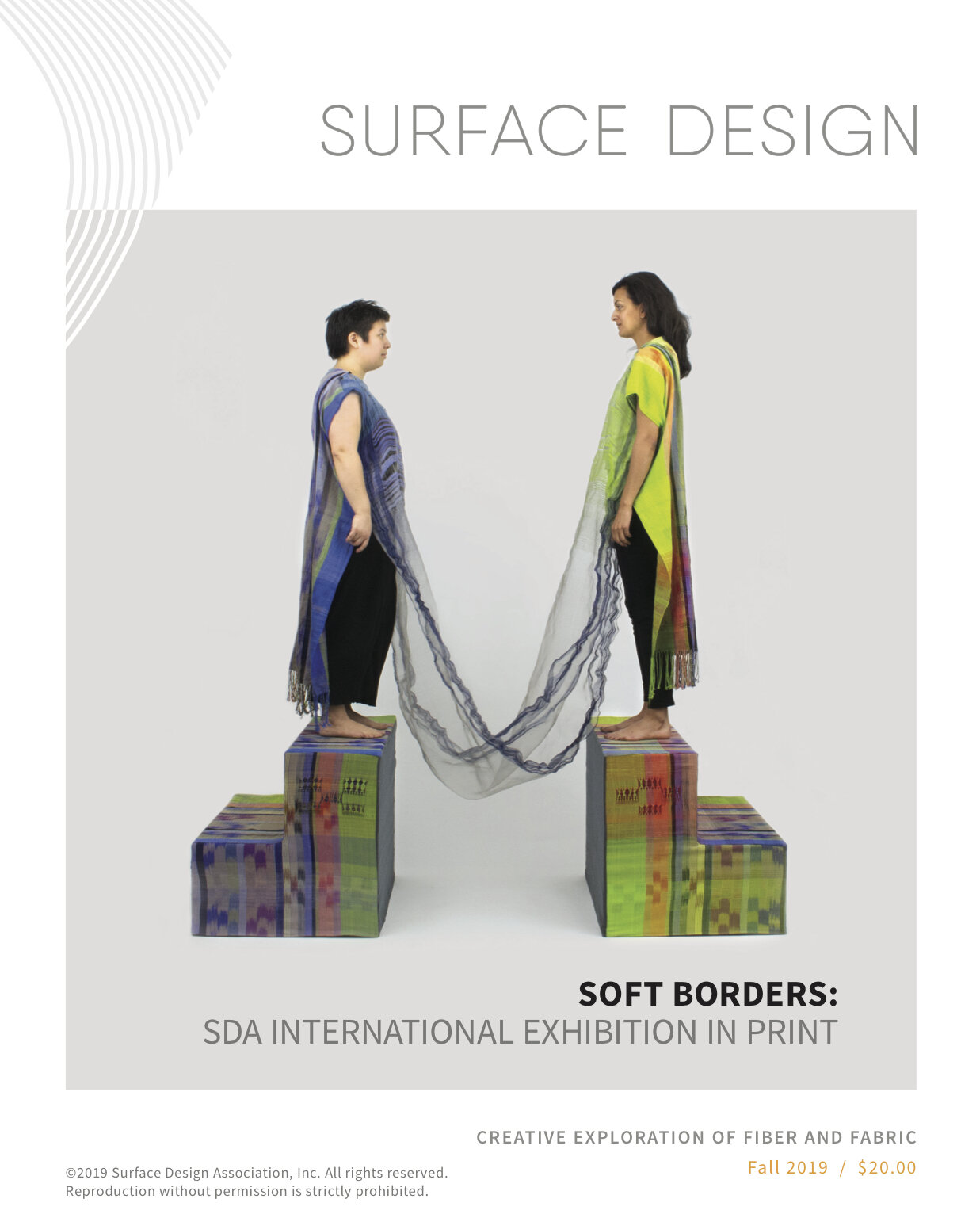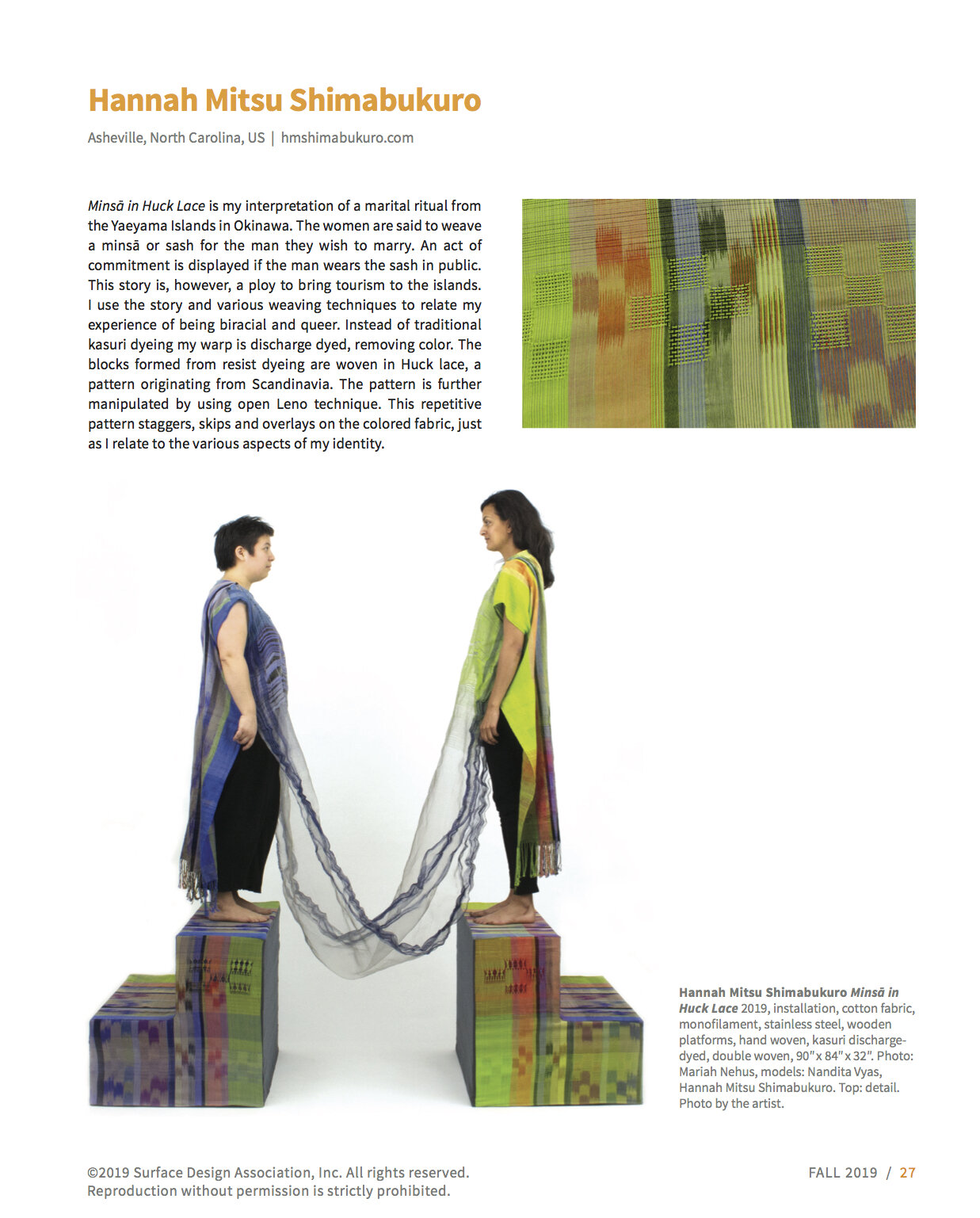The Yaeyama Islands are the furthermost islands in Okinawa, closer to Taiwan, China, and the Philippines than mainland Japan. On these islands the women are said to weave a sash, known as minsa¯, for the man they wish to marry. If the men wear the sash in public it is an acknowledgement of that commitment. The woven structure contains a puzzle. It is dyed with kasuri resists to repeat alternating patterns of four and five blocks. The words for five (itsu) and four (no yo) complete the rhyme (made mo): “yours forever more.” Around these block repeats is a band of vertical stripes, described as centipede legs. These are to signify how the women want to be visited often by their suitor.
This is said to have been practiced for 300 years by the commoners of Yaeyama. But cultural historians have found evidence that it is actually closer to 130 years old, and is not just a practice of commoners. It is more a combination of two other traditions; a sash given as a gift of protection, and a scarf and necklace exchange between a couple. The mythologizing of the minsa¯ pattern was more a ploy to attract tourists from the more populated surrounding areas. Specifically, the mingei, or craft enthusiasts. As a side effect it has also become a symbol of Yaeyama identity. These oppositions, between truth and ideal, intention and accident, are fascinating to me.
I took this history and filtered it through my identities as biracial and queer, as well as the lived experience of those identities. The kasuri was discharged dyed, meaning that instead of additive dye, color is removed from the warp. The pattern blocks that are typically formed from resist is instead made up of three huck lace blocks, a pattern that originated from Scandinavia. The pattern is again hand manipulated with leno lace. This repetition – which staggers, skips, and overlays on the fabric – matches how I relate to my identities in everyday life. Sometimes they match, sometimes they misalign, sometimes they clash.
This installation is for those with similar fighting identities. Internalized whiteness makes you question everything, not only what you think but what others might think of you thinking it. The cultural standard in the United States is strict, and falling anywhere outside of it is exhausting.
I wanted a garment for two people healing from internalized whiteness to share an intimate space. The fabric slipcovers and back of the fabric match, forming a visual wall against their backs. The front of the garment is made of monofilament and wire, connecting the two participants. It is light, reflective, dynamic. The garment was woven as a doubleweave tube, allowing most of the construction to be done on the loom.
the restriction, extraction, and disposal of color
only adds power to the saturated hiccups
that bring back our history in full
what was a ritual exchange of love
put out in honor of us
all othered
made foreign
marking the space where we meet
to give us time to recognize ourselves
to uncurl our spines, long bent with appeasing
to change the air
realizing that we are so much more
than mere reaction, education, or defense
to let us rest
in our bodies, feeling
without preface
the striping of centipede legs
four, or five, and three stacks high
a staggered repeat
through a feathering of color
absence
or a twist of hand
minsa; itsu no yo made mo
five, four
yours forever more

